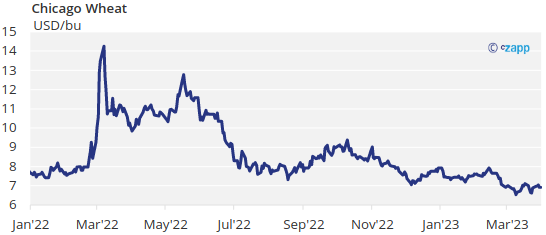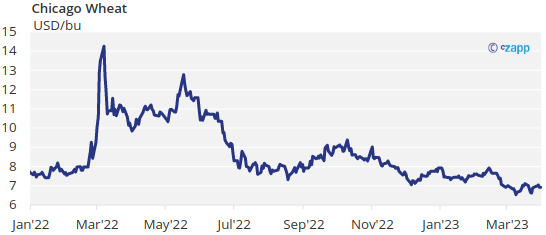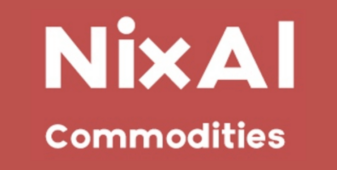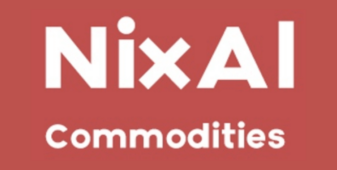Insight Focus
- US soybean planting seen flat year on year.
- Corn plantings up 4% year on year.
- Soybean’s rally pulls corn higher too.
Forecast
No changes to our Chicago Corn average price forecast for the 22/23 (Sep/Aug) crop in a range of 6 to 6,5 USD/bu. The average price since Sep 1 is running at 6,7 USD/bu.
Market Commentary
Soybeans pulled Corn higher but Wheat was unable to follow -given the ample supply picture left in the USDA quarterly report- and had weekly gains below 1% while Corn had gains of almost 3%.

In reality the prospective planting report and quarterly stocks should not have been that bullish to spark almost a 3% weekly rally in Corn. In fact, Wheat saw much lower gains due to the big grow in expected planting and quarterly stocks.
Corn planting in 2023 is expected at 92 mill acres or +4% year on year, in the upper range of estimates. Soybean planting is expected in 87,5 mill acres flat year on year and in the low part of the estimates. And Wheat planting is projected in 49,9 mill acres or +9% year on year.
The quarterly stocks showed Wheat stocks at 946 mill bu as of March 1 much higher than the 930 mill bu expected. Soybean stocks were 1,69 bill bu much lower than the 1,73 expected. And Corn stocks were 7,4 bill bu very much within expectations.
Soybeans pulled Corn higher but Wheat was unable to follow.
Before the Friday report, China continued to buy US Corn, which provided support during the first part of the week.
In Argentina, Corn harvesting is 7% complete. In Brazil, the Soybean harvest is catching up and is 69,1% complete vs. 75,8% last year. The second corn crop made a big weekly progress and is now 91,1% planted but still behind last year’s pace of 98,2%. The first Corn crop is 41,9% harvested.
In the Wheat front, we had news by mid last week that Cargill and Viterra will leave Russia after the summer as apparently the Russian government is pressing them to leave the country. There were no more news of the Russian government halting Wheat exports as they suggested the previous week.

French Wheat condition is 94% good or excellent.
The grains corridor out of the Back Sea, although officially extended, is not really moving with as much as 94 vessels in the line up to be inspected therefore no new deals are being made.
In the weather front, a late cold front in the US is not favorable for Wheat condition and the start of Corn planting. In south America, rains and hot temperatures are expected in Argentina while dry weather is expected in Brazil favoring soybean harvesting activities as well as safrinha Corn planting. Europe is expected to receive good rains in the north but south of Europe is expected to remain dry worsening Wheat condition.
We enter now the period of Corn planting both in the US and Europe. This should bring some volatility depending on how much weather influences the pace of planting and Corn condition.
But fundamentally -as confirmed by the farmers polled by the USDA- we are heading to production growth thus downside risk in the mid term which does not mean we will not have short term rallies like the one last week. This view does not include a potential Russian ban on exports.







